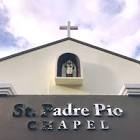Art in the Aftermath: Israeli Exhibitions Reflect the Scars of War
Exhibitions “Second Draft,” “Kuma: The Art of Eitan Rosenzweig,” and “War Decorations” reveal how artists transform the pain of conflict into powerful reflections through vivid canvases and profound installations
By Veronica Neifakh /The Media Line
In the midst of conflict, art has long served as a mirror to the human experience—a way to process grief, honor resilience, and search for meaning in the unimaginable. In Israel, where the impact of war is etched into the lives of its people, artists who have seen its horrors firsthand are finding their voices in paint, creating works that not only reflect their personal pain but resonate with a nation grappling with collective trauma.
Three recent exhibitions stand out as poignant testaments to this profound intersection of art and life: “Second Draft” at the Jerusalem Biennale, “Kuma: The Art of Eitan Rosenzweig” at the Bible Lands Museum, and “War Decorations” by Tal Mazliach at the Tel Aviv Museum of Art. Each exhibition, in its own way, offers an intimate glimpse into the scars left by war—on individuals, on families, and on Israeli society as a whole.
Speaking exclusively with The Media Line, the curators of these exhibitions and directors of Museums shared their insights into the creative process behind these works and the importance of presenting art that confronts the realities of war. These exhibitions do more than just commemorate; they invite viewers into a dialogue.
A Soldier’s Canvas: The Art of Sam Griffin at the Jerusalem Biennale
In the heart of Jerusalem, an extraordinary exhibition titled “Second Draft” sheds light on the intersection of art and war. Created by British Israeli artist Sam Griffin, the exhibition reflects his experiences as a reservist during the Israel-Hamas conflict. Ram Ozeri, founder and director of the Jerusalem Biennale, shared the deeply personal journey behind Griffin’s work, offering a glimpse into how war shapes art—and how art helps process the profound effects of war.
In “Second Draft,” Griffin captures the quiet violence of memory through landscapes that pulse with understated tension. His brushwork evokes the stillness of days spent stationed on the border, where the absence of action only heightens the emotional weight.
Born in London, Griffin moved to Israel at the age of 20, completed his military service, and went on to study art in Bethlehem. He established himself as a successful artist, exhibiting internationally, selling works, and balancing his career with a family life. “A very regular story,” Ozeri remarks, until the events of October 8, 2023, changed everything.
Called up as a reservist just one day after the devastating October 7 attack, Griffin found himself stationed in Gaza. “He spent four months in total there,” Ozeri explains, detailing how Griffin’s innate artistic perspective influenced his experience. “Sam has the soul of an artist, the eyes of an artist. He’s very sensitive and visual.” Even amid the chaos, Griffin carried a small sketchbook, capturing impressions of the landscapes and scenes around him.
Returning home after months in uniform, Griffin faced a harrowing adjustment. “He said it was the hardest moment,” Ozeri recalls. “When you are there, you act in an automatic way. But when you come home, you need to process the experience. He was scared—scared that he wasn’t the same person, the same father, the same husband, or the same artist.”
Griffin turned to his art to confront these fears. The paintings in “Second Draft” are primarily landscapes, capturing the stillness and subtle tension of war zones. “You don’t see blood, bodies, or explosions,” Ozeri notes. “But you feel something intense in those landscapes. It’s indirect but incredibly powerful.”
The exhibition’s title, “Second Draft,” carries deep symbolic meaning. In Hebrew, “sevev bet” refers to a second draft in the military, often when soldiers are called back to serve. “It’s like coming home, only to be called again,” Ozeri explains. Griffin’s artistic journey mirrors this cycle, as he first exhibited a smaller collection in March 2024 before creating the larger, more comprehensive show now on display at the Heichal Shlomo Museum.
Opened in June 2024, “Second Draft” closes on January 10, 2025, before traveling to New York and other global destinations.
Griffin’s work offers a unique glimpse into the realities of modern warfare. “For many soldiers, war isn’t what you see on the news,” Ozeri says. “It’s not just explosions or heroism. It’s hours and days of nothing—standing, waiting, and hearing distant sounds. Sam’s work captures that quietness, those ‘dead hours’ of war.”
One standout piece is a self-portrait of Griffin as a soldier. “It’s the only work in the exhibition that isn’t a landscape,” Ozeri shares. “You see the uniform and the gun, but no face. It’s my favorite piece. It became the leading image of the exhibition.”
Ozeri connects deeply with Griffin’s work, not just as a curator but as someone shaped by the legacy of war. “I served myself,” he reveals. “But it’s personal for me because of my father. He fought in three wars—1957, 1973, and 1982. After eight months in the Yom Kippur War, my mom said he was never the same.”
This personal connection underscores the broader impact of Griffin’s work. “In Israel, everyone is part of this war,” Ozeri says. “Teachers, shop owners, bank managers, even my rabbi were called to reserve duty. It’s rare—this mix of being a professional, living your life, and then suddenly becoming a soldier. That’s what makes Sam’s story so powerful.”
Griffin’s paintings invite viewers to reflect on the complexities of war and the transition back to normal life. “It’s about coming home,” Ozeri explains. “You leave the intensity of war, but then you’re washing dishes, changing diapers, going to the supermarket. That’s the hardest moment for many soldiers. Art makes it easier—it helps you reconnect with yourself and others.”
As “Second Draft” prepares to travel the world, it carries with it a message of resilience, humanity, and the transformative power of art. “Sam’s work helps us understand that war is not just what you see in headlines,” Ozeri concludes. “It’s the quiet moments, the fear, and the return to life after it all.”
A Legacy in Art: Honoring Eitan Rosenzweig at the Bible Lands Museum
In the wake of the Israel-Hamas war, the Bible Lands Museum in Jerusalem presents “Kuma: The Art of Eitan Rosenzweig,” a deeply moving tribute to an extraordinary young artist and soldier. Rosenzweig, a gifted yeshiva student and artist, was just 21 years old when his life was tragically cut short in the conflict. This exhibition reflects his exceptional artistic journey, his connection to Jewish heritage, and the devastating loss felt by his family and community.
Rosenzweig’s extraordinary three-and-a-half-meter scroll is a vivid and intricate tapestry of Jewish history and collective memory. Layered with poetry, symbolism, and images drawn from Near Eastern and global traditions, the exhibition invites viewers into the mind of a young artist whose life was brimming with creative promise.
Rosenzweig grew up in Alon Shvut, where he balanced rigorous yeshiva studies with his passion for art—a rare combination for a male yeshiva student. “He was enrolled in a special arts program and completed high school with honors,” explains Risa Levitt, executive director and acting chief curator of the Bible Lands Museum. For his final project, Rosenzweig created a three-and-a-half-meter scroll, depicting the journey of the Jewish people throughout history. This monumental work earned him national recognition, including a scholarship for further art studies.
Following his graduation, Rosenzweig joined the Givati Brigade. He completed his military service on Yom Kippur in 2023 but was called back to duty during Simchat Torah on October 7, 2023, following the Hamas attacks. “He was among the first battalions to enter Gaza,” Levitt recounts. “He fought there until November 22, when he was tragically killed.”
In the aftermath of Rosenzweig’s death, his parents revisited his room, where they found his sketchbooks and the scroll carefully preserved in a plastic bag. A short article about it caught Levitt’s attention. “The article didn’t include much detail, just a couple of photos, but something in his work spoke to me immediately,” she says.
Uncharacteristically, Levitt contacted the journalist who wrote the piece and was put in touch with Rosenzweig’s former art teacher, Porat Solomon. Initially, Rosenzweig’s family was unsure how to proceed. “It was so fresh, so new for them,” Levitt recalls. Months later, the family visited the museum, bringing the scroll and Rosenzweig’s other works. “They laid it all out on the table, and it was so much more than I thought. It was clear immediately that he needed his own gallery, his own exhibition.”
The exhibition, which opened on May 22, 2024, features Rosenzweig’s monumental scroll, his sketchbooks digitized for display, and several other works.
“The scroll itself is amazing,” Levitt emphasizes. “It’s full of images, quotations, and poetry taken from Israel, the Near East, and Asian philosophy. At the start of the exhibition, we identified 32 key points to explain. Now, thanks to visitor input and careful study, we’ve uncovered over 132 points of meaning.”
Among the standout works is a piece based on a painting by Francisco Goya, reimagined in the context of the Jewish holiday Hoshana Rabbah. “It incorporates a prayer that starts with the words ‘Lema’an Oz’ (For the sake of strength), a play on Eitan’s name [“Eitan” means “strong” in Hebrew],” Levitt explains. “It almost foretells his destiny, as though he knew his role in this long, never-ending story could be cut short.”
For Rosenzweig’s family, the exhibition has been transformative. “His parents have come dozens of times to give gallery talks about his life and work,” Levitt shares. “His mother described it as therapy, saying it feels like Eitan is alive in the gallery.”
The exhibition has resonated deeply with the public, attracting thousands of visitors. “We published a booklet of Eitan’s work, and out of the 1,000 copies, only 150 remain,” Levitt says. Entirely crowdfunded by over 350 donors, with contributions ranging from 18 shekels to 10,000 shekels, the exhibition has struck a chord with many. “It’s one story among thousands of lives cut short, but it touches a nerve and helps people understand what was lost.”
“Kuma: The Art of Eitan Rosenzweig” is more than a tribute to a life lost. “It’s about grieving, healing, and the importance of peace,” Levitt reflects. “It’s a reminder that art can be a powerful tool for therapy and understanding.”
The exhibition will remain open until May 16, 2025. Levitt encourages everyone to experience it firsthand. “I feel like I’m not doing it justice,” she admits. “The only way to truly understand is to see it.”
Through this exhibition, Rosenzweig’s legacy lives on—a testament to his extraordinary talent, his deep connection to his heritage, and the enduring power of art to heal and inspire.
Bearing Witness Through Art: ‘War Decorations’ by Tal Mazliach at the Tel Aviv Museum of Art
Amid the aftermath of October 7, the Tel Aviv Museum of Art stands as a space for reflection, healing, and resilience. ‘War Decorations’ by Tal Mazliach offers a uniquely personal response to the events of that day, capturing the raw emotions of fear, survival, and hope through vivid and intense works of art. This exhibition sheds light on the transformative power of art in processing and bearing witness to deeply traumatic experiences.
Tal Mazliach, a renowned artist with a career spanning three decades, calls Kfar Aza—a kibbutz on the Gaza border—her home. On October 7, she experienced the horrors of the Hamas attack firsthand, trapped in her safe room for more than 20 hours before being rescued.
“After she was rescued, she didn’t have access to her studio or usual materials,” explains Mira Lapidot, chief curator at the museum. “She bought small-format canvases from a simple arts and crafts shop—completely different from her usual style—and began painting immediately. It poured out of her day after day, week after week, as she processed what she had just endured.”
Mazliach’s work reflects her distinct style: densely packed, colorful canvases with no untreated space. “At first glance, the paintings look bright and happy, but when you look closer, there’s a creeping sense of anxiety,” Lapidot says. “The intensity of fear is embedded in the imagery and in sentences she encrypts into her work, like ‘But I stayed alive.’ It creates a dissonance between the visual beauty and the emotional weight of the paintings.”
Mazliach’s personal experience as someone directly affected by the events of October 7 sets her work apart. “This is not secondhand. She was there,” Lapidot emphasizes. “Her work carries a unique intensity, offering a form of bearing witness that is deeply personal and immediate.”
Mazliach’s art has always engaged with the complexities of life on the border, but for many Israelis, her reality seemed distant—until now. “Her paintings, which have always been about living on the border, now resonate on a much broader scale, reflecting the horrors that so many experienced firsthand,” says Lapidot.
“War Decorations” is just one of several exhibitions currently on view at the Tel Aviv Museum of Art. Alongside it is “Hold Everything Dear,” a curated collection of works by artists from different times and places who experienced war or hardship. The exhibition features pieces by renowned artists such as Picasso, Modigliani, Munch, and Schiele, alongside Israeli artists, exploring themes of loss, exile, and sorrow.
“This exhibition doesn’t directly address the events of October 7 but provides a broader perspective on history,” Lapidot explains. “It’s deeply sentimental and moving, offering visitors a space to process these moments through art.”
Mazliach’s “War Decorations,” however, resonate most directly with the current moment. “Her work gives people something to hold onto, something that reflects their feelings while offering a sense of resilience,” says Lapidot.
“I think every exhibition we have now, whether directly or indirectly, is seen through the lens of the war,” Lapidot reflects. “Art gives us a way to process these events, to reflect on them, and to find moments of beauty and hope amid the darkness.”
Brought to you by www.srnnews.com





















